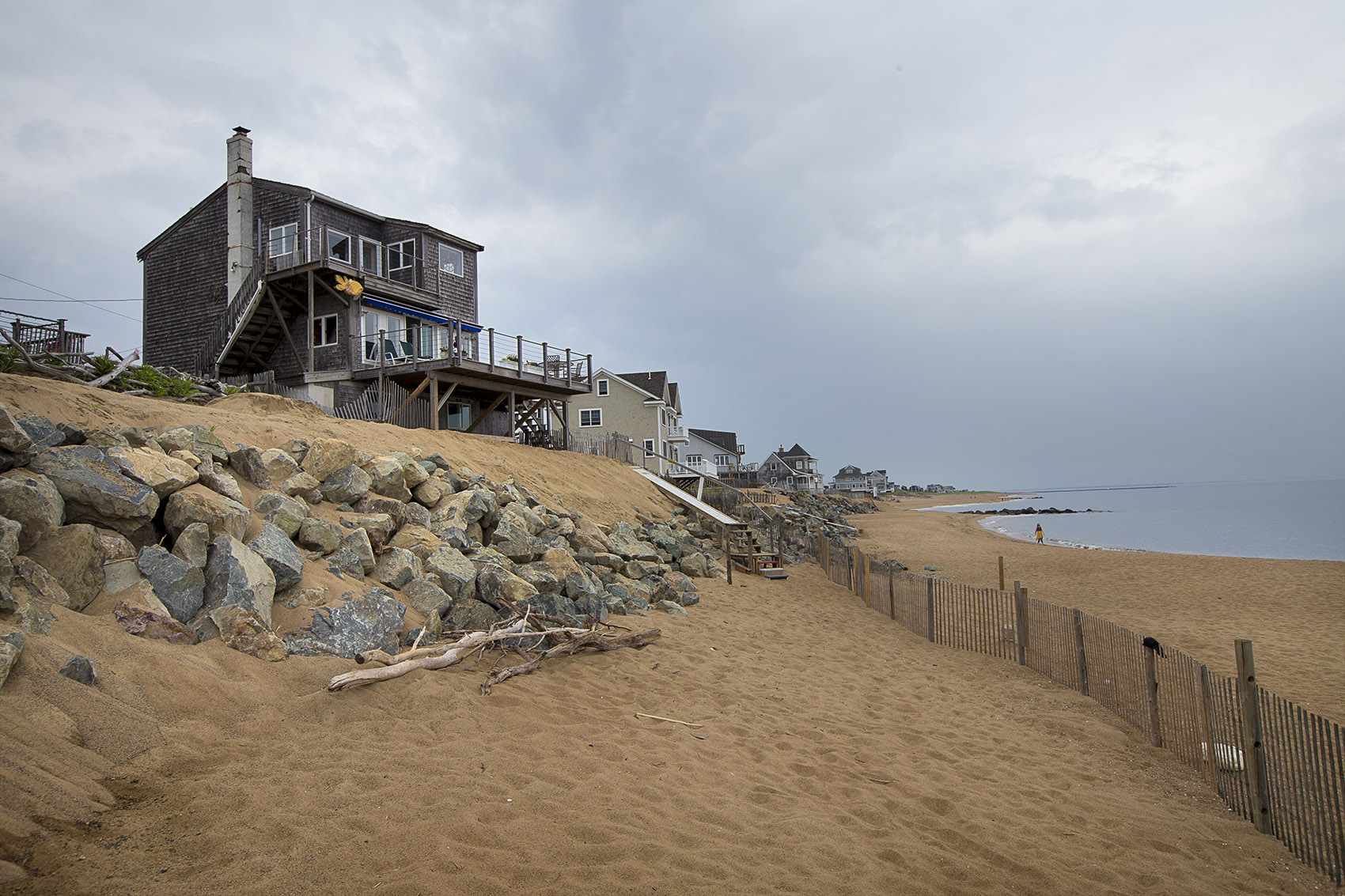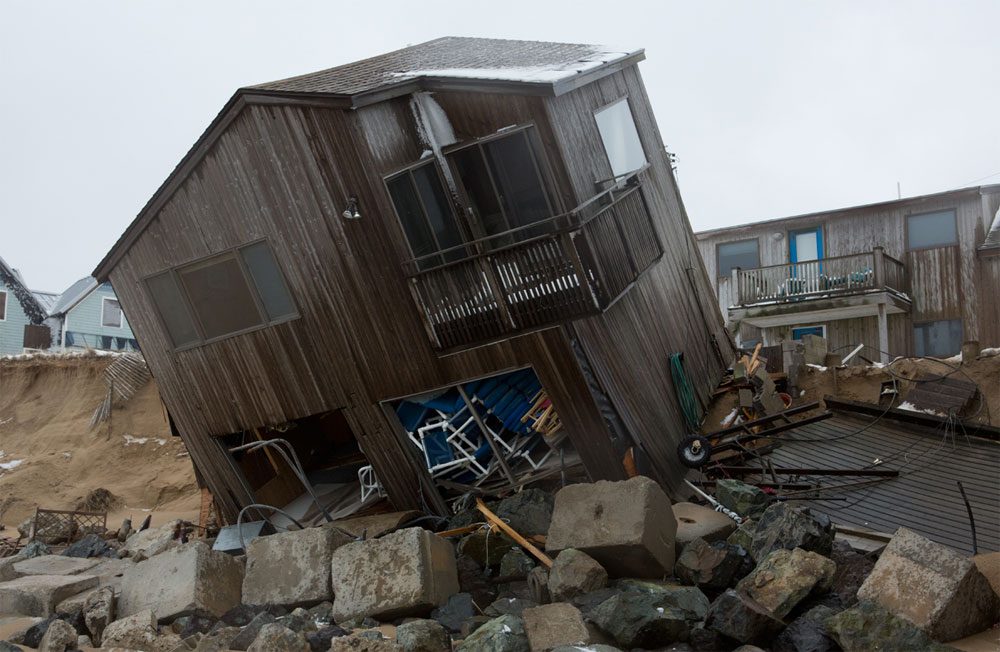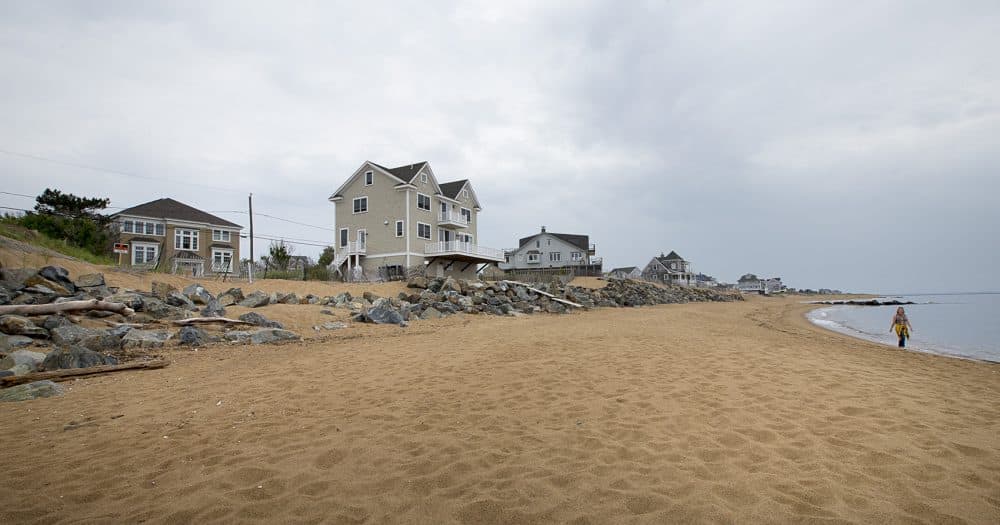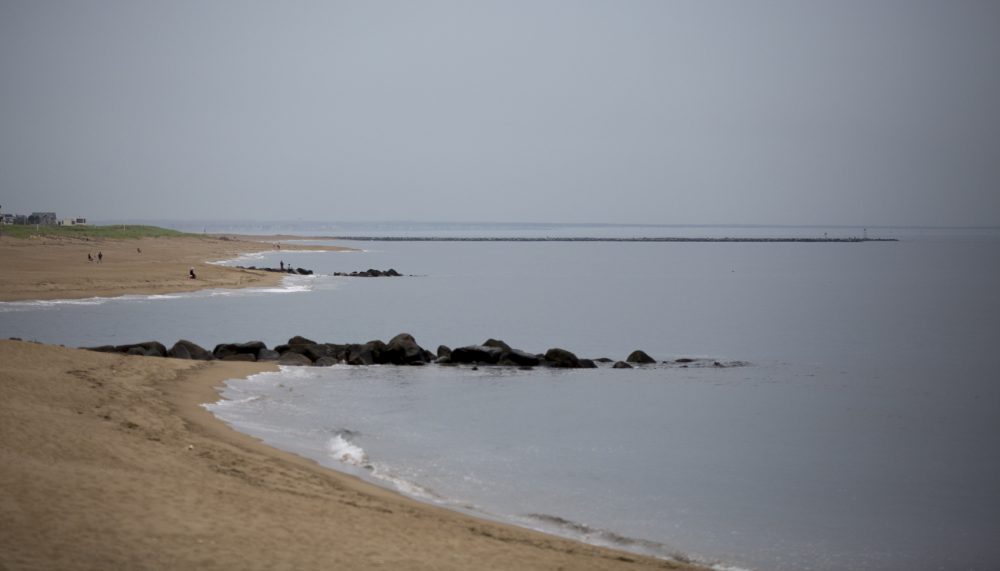Advertisement
Climate Change In Mass.
Signs Of Climate Change — Past, Present And Future — On Plum Island
Resume
Plum Island is mostly a national wildlife refuge. It's a long, narrow spit of sand 50 miles north of Boston.
You can see evidence of climate change past and present there, and get a glimpse of the future.
The island was created by climate change. Over millions of years, natural forces made the planet a lot colder and the ocean sea level a lot lower.
Nowadays, it's hard to believe Plum Island was once buried under half a mile of ice. Eleven thousand years ago, the glacier began receding, leaving a scarred landscape that was sculptured by wind, waves and currents into today's barrier island beach.
Parker Jones, a frequent visitor to Plum Island, lives in nearby Newburyport. It's one of four Massachusetts towns protected by the 11-mile-long barrier island.
The sand dunes and marshlands absorb the energy of storms and soak up floodwaters before they can reach coastal communities.
Million-dollar homes, with views to match, have been built on Plum Island over the last few decades.
"What I know is that this area here has been particularly hit hard," Jones said. "Actually some houses fell in a couple of winters ago."
Bringing In Boulders

March 2013: A nor'easter blizzard pounded Plum Island. It was the fifth major storm in just a few months. Change is in the air: Historically the island averages two gale storms a year.
Wrecking crews demolished what was left of several homes that were built high atop a dune that took direct hits.
Dan Tolpin was luckier than his neighbors. His house, overlooking the ocean, survived -- just barely.
"It was condemned for three weeks," Tolpin said. "The three houses right beside us were damaged enough that two of them went into the ocean, and one of them, they leveled it into the ocean because it was so dangerous."
To shore up the property, Tolpin said, "we put up these big boulders all the way up to the edge of the deck."
Plum Island homeowners did not have permission to bring in the boulders, but there were few complaints. A large share of the coastal community's property taxes are paid by the owners of these expensive beachfront homes.
The rocks were covered with sand scraped off the shore, but erosion is relentless.
"I mean the sand comes and goes," Tolpin said. "It's amazing how much the beach changes, the sand changes, on a weekly basis. It's just incredible."
And the climate is changing, says Tolpin. Storms are increasingly more frequent and powerful. Three times over the last four years he's had to haul in more boulders to shore up the sand under his home.
"It's a losing battle eventually, and there is a good, good chance that all these houses eventually will be gone," he said. "No matter what our president says, climate change is occurring."

'How Do We Prolong Our Time On Plum Island?'
The Plum Island shoreline is a case study in the complexities of human-caused global climate change interacting locally with man-made structures and coastal development.
Mike Morris is a surfer-turned-citizen scientist. He studied oceanography and meteorology in college and consulted colonial sea charts and climate records to predict waves for surfers. He's become an expert on the competing forces of economics and erosion on Plum Island.
"If you're a homeowner, to be honest with you, the rocks have saved the houses," he said.
But Morris is not in favor of building seawalls. He says as ocean waters warm, they pack more power, so when waves hit stone structures, the energy bounces off, moving sand and reshaping beaches in ways nature never intended.
There are two huge stone jetties on Plum Island. They were designed to keep the Merrimack River, the second largest in New England, straight and sand-free as it flows past Plum Island into the Atlantic. But sand collects on the south side of the jetties, starving the north, where the beach has narrowed by 300 feet in just three years.
"I can't really predict what the fate of any of these houses are going to be," Morris said. "All I know is that sea level is rising, storms are getting bigger, because if you look at the fossil record, it's coming, and so the question becomes: How do we prolong our time on Plum Island?"
For Massachusetts officials the solution is to nourish the beach, to get hundreds of thousands of cubic yards of sand the U.S. Army Corps of Engineers plans to dredge from Portsmouth Harbor, and bring it to Plum Island.
But the state doesn't have the money, and the program is at least two years off.

Andrew Ashton, a geomorphologist at Woods Hole Oceanographic Institution, studies how currents and waves move sand on beaches. He says adding more sand is only a short-term fix.
"Any nourishment project tends to be a commitment to further engineering of the shorelines. When we start placing fill on a beach, they tend to plop it right on the very top part of the beach, and waves very quickly start moving that offshore," Ashton said. "These projects are known, even from an engineering standpoint, to only last several years or whatever that design time period is."
"Barrier beaches that aren't developed are self-renewing," Morris said. He says the best thing to do might be nothing: Let nature reclaim Plum Island.
But it's an unlikely option, as artificially preserving barrier islands for development often leads to more development. Morris says beachfront homeowners can buy time with more sand, but it's literally just a drop in the ocean.
"The ocean is pretty big," Morris said. "Get up and Google Earth, start out at Plum Island and just keep going out and out and out, and look at that ocean and ask yourself, are you kidding yourself? Is that [rock formation] going to stop that [ocean]?
"It might not be 2030, it might not be 2075, but at some point the ocean will win out."
Plum Island is a minor, fragile footnote in geological time -- just one of Massachusetts' 681 barrier beaches. But those beaches help protect 1,500 miles of the state's coastline counties, where two-thirds of our residents call home.
This segment aired on July 19, 2017.
